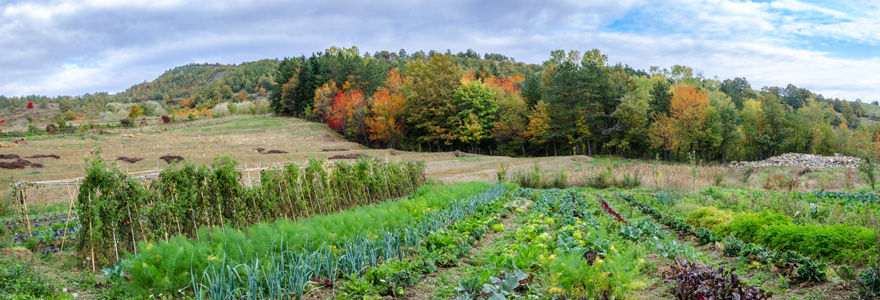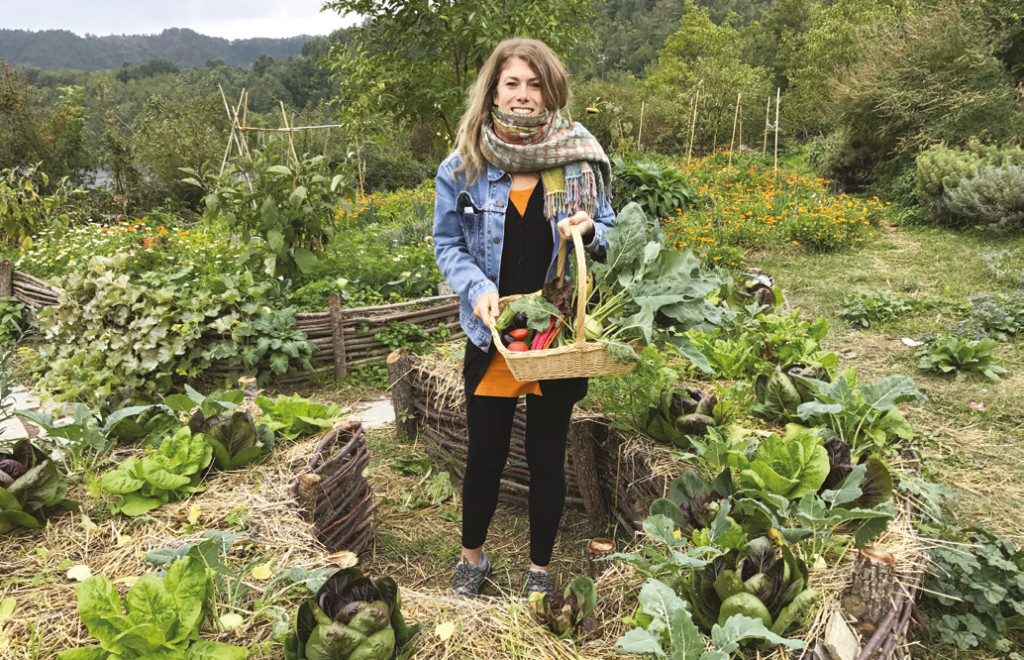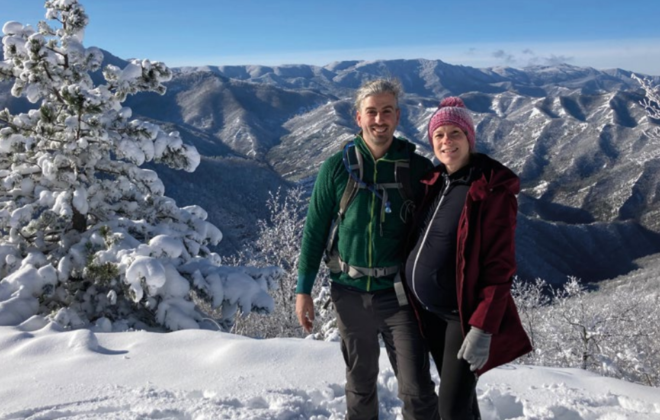Love for nature and agriculture
With permaculture, farms become natural masterpieces
In the early 1990s, when I was still in elementary school, adults decided that I couldn’t go to school because I wasn’t vaccinated. At that time, I was living with my family in an isolated house in the hills, so I would spend all days with my dogs running in the woods that surrounded the house. I was attracted and in love with the nature that surrounded me. I would jump over the gurgling streams, chase wild animals and pet my big dogs so grateful for the runs we did together.
After about two years, when I returned to school, the time spent in the woods decreased, but my attraction towards nature remained intact. So, when the time came to decide which high school I was going enroll, I chose the Institute for Agriculture and Environment with the idea of becoming a forest ranger when grown up, in order to continue living surrounded by woods.
Farewell woods
After two years my family moved to Cesena, so I decided to enrol in the Agricultural Institute, the most similar alternative to my school that there was in town. I spent the next three years of school thinking that I would never have worked in agriculture.
I do not remember what my opinion on agriculture was at the time, but surely it was not something that attracted me. In my thoughts all farms were sad flat fields cultivated in monoculture and farmers were people who spent most of their time on a tractor or inside a stinking barn. I did not associate the farm with something beautiful at all. Indeed, since the advent of industrialization, I believe that agriculture has been seen as something negative, poor and dirty and this vision probably affected me as well in my youth.
I finished high school and completely left the field of nature and agriculture by enrolling in the University of Tourism Economics. At the same time, I started to manage Macrolibrarsi that back then was mail-order business of books on the well-being of the body, mind and spirit.
The discovery of permaculture
In 2009 – I was 24 – I had the opportunity to buy a land in the mountains with the aim of making my family self-sufficient and resilient. The occurrence of environmental, economic and energy crises along with the risk of food and water crises led us to buy a farm that had been abounded for over 10 years with the aim of self-producing food and energy.
The farm center was made of almost collapsed sheds covered with asbestos cement, rusty iron tools everywhere, a mountain of stinking manure, plastics and other scattered waste along with energy and telephone trellis that crossed the property.
On the other hand, the woods, meadows and mountains that surrounded the center of the company were spectacular and it had been love at first sight. Now that I had a farm, I had to learn everything I should have known already because I had been in school, but that actually I had never learned.
I still didn’t like agriculture as I had studied it at school and as it is normally practiced, but then I discovered thanks to permaculture that there was a completely different way to design a farm by imitating natural models.
So, I started studying again, taking courses and visiting permaculture projects also abroad. Soon I met wonderful farms where beauty and nature prevailed over man. The farmer’s main job was no longer to contrast nature, but to support it as much as possible to obtain an advantage. Farms such as Sepp Holzer’s Kramtherof or Panos Manikis’ Natural Farm have deeply influenced me and thanks to them I understood that it was possible to create a farm that I could fall in love with, just like I did with the woods as a child.
I started to design and build orchards and natural gardens, food forests, terraces of polycultures, hedges, lakes, pastures with wood fences, dry-stone walls and green buildings.
Agriculture and nature: only one love
Il risultato è che quest’anno quando sono partito per le vacanze, salutando gli animali, gli alberi e le montagne della Fattoria avevo le lacrime agli occhi.
Oggi amo l’agricoltura come amo la natura.
Quando mi muovo lontano da casa osservo sempre con ammirazione come l’uomo ha modellato il paesaggio nei secoli, adoro sentire i racconti degli anziani su come si faceva agricoltura un tempo e quando viaggio mi informo sempre sulla tradizione agricola del luogo.
Ovviamente rimane il fascino per la natura incontaminata, ma accompagnato dalla consapevolezza che anche l’uomo, con i giusti stimoli e le opportune conoscenze, può creare dei paradisi naturali.
Studi sempre più numerosi, condotti in ogni angolo del mondo, dimostrano il giovamento, in termini di salute fisica e psicologica, nel passare del tempo nella natura e solitamente ci si riferisce a boschi secolari, montagne, laghi e in generale ai luoghi meno antropizzati. La Fattoria dell’Autosufficienza oggi ha l’arduo obiettivo di dimostrare che tali benefici è possibile viverli anche abitando in edifici costruiti con materiali naturali, cibandosi di cibi genuini e autoprodotti e lavorando in strutture e campi ispirati ai modelli naturali.
The result is that this year before leaving for the holidays, I had tears in my eyes as I was saying goodbye to the animals, trees and mountains of the farm. Today I love agriculture as same as I love nature.
When I move away from home I always observe with wonder how man has shaped the landscape over the centuries, I love hearing the stories of the elderly about how agriculture used to be in the past and when I travel I always inquire about the agricultural traditions of the place.
Obviously, the fascination for uncontaminated nature remains, but with the awareness that man too, with the right inputs and appropriate knowledge, can create natural paradises.
Increasingly numerous studies, conducted in every corner of the world, demonstrate the benefit, in terms of physical and psychological health, of the time spent in nature and they usually refer to centuries-old woods, mountains, lakes and in general to less populated places. La Fattoria dell’Autosufficienza today has the difficult goal of demonstrating that these benefits can also be experienced by living in buildings made of natural materials, eating genuine and self-produced food and working in buildings and fields inspired by natural models.
Newsletter
ARGOMENTI
- Activities (8)
- Attività (10)
- Attrattive (16)
- Cosa fare (22)
- Farm products (4)
- Fattoria dell'autosufficienza (39)
- Fattoria dell'autosufficienza (51)
- Fauna (8)
- Flora (5)
- I nostri modelli (14)
- Istruzioni per viaggiare (2)
- News (63)
- News (96)
- Our models (14)
- Permacultura (30)
- Permaculture (23)
- Prodotti della fattoria (4)
- Senza categoria (4)
- Senza categoria (2)
- Things to do (22)
- Tourist attractions (15)







